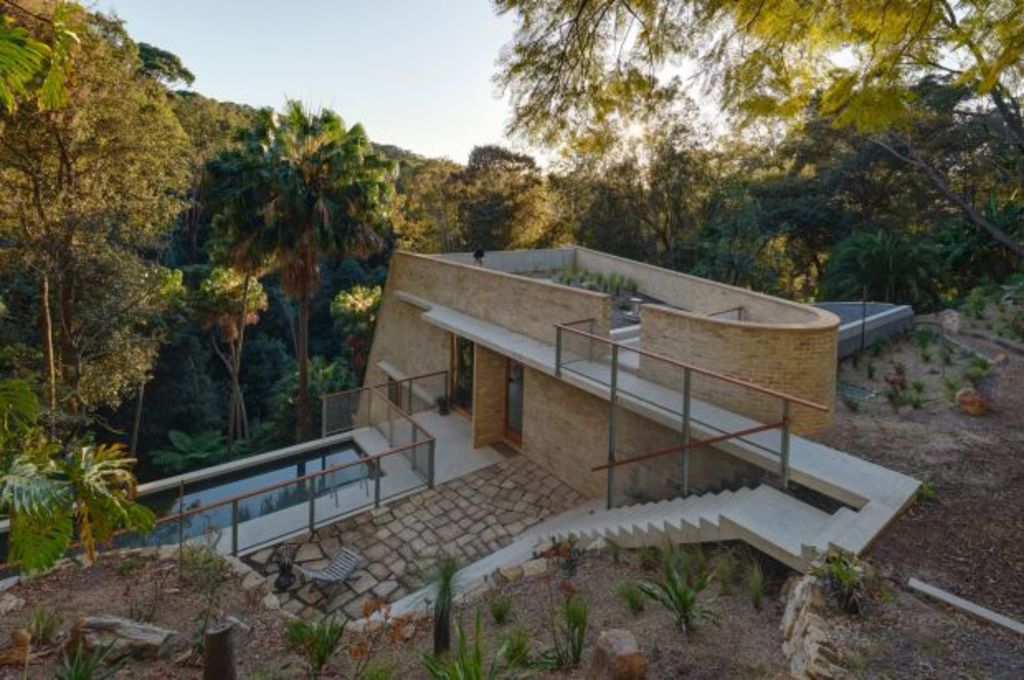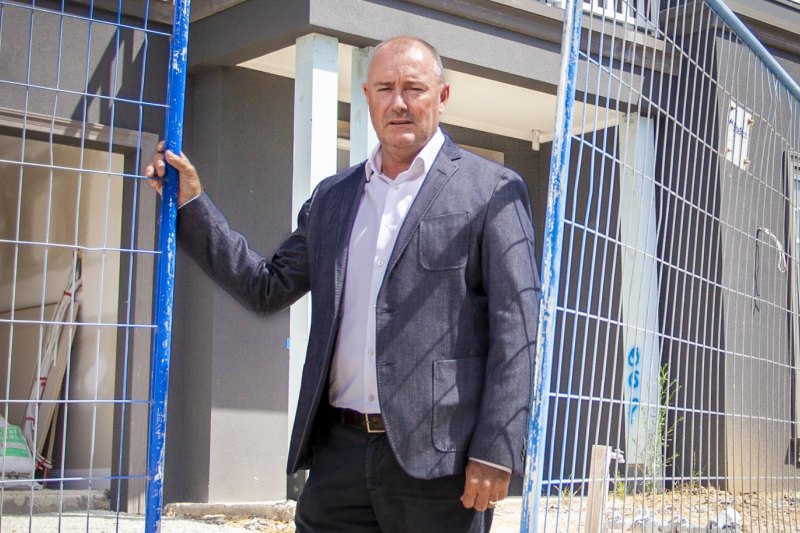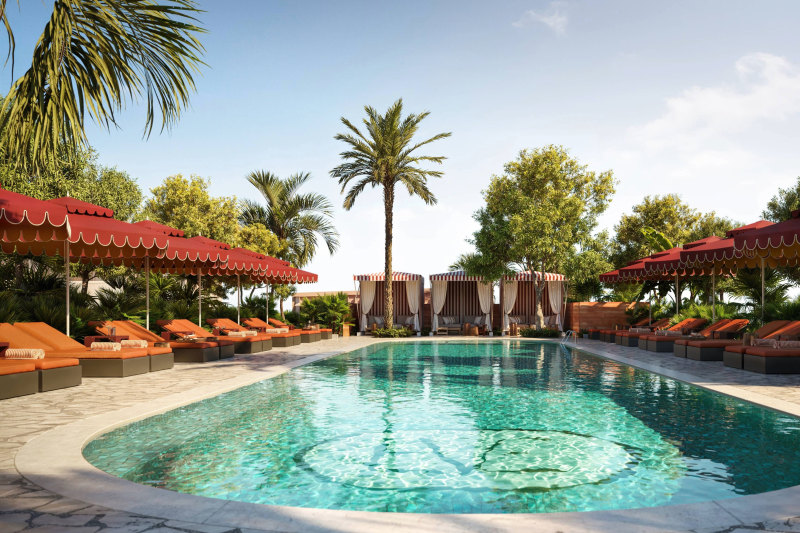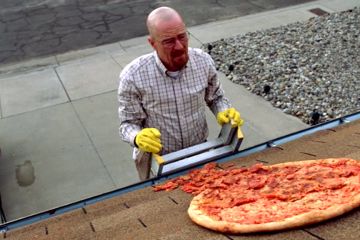Cave-like home nestled in rocky hillside named 2018 Australian House of the Year

A cave-like home leaning into a rocky hillside in Sydney’s northern beaches has been named the 2018 Australian House of the Year.
Cabbage Tree House by Peter Stutchbury Architecture, was selected by a panel of leading industry experts for its innovative approach to sustainability and its restraint.
The design is landscape-driven and features geometric and material simplicity, including exposed concrete, steel and brickwork. It was lauded not only as an impressive piece of architecture, but also as a functional and welcoming home that will withstand the test of time.
The panel of judges included Kerry Clare (director, Clare Design), Albert Mo (director, Architects EAT), Jennie Officer (director, Officer Woods Architects), and Katelin Butler (editor, Houses magazine) and Stuart Vokes (director, Vokes and Peters).
“Cabbage Tree House is wonderfully aspirational, beautifully made and a joyful expression of landscape and one’s place in nature,” said Vokes.
“It was a reminder that often the critique of great architecture isn’t measured by what one does, but by what one chooses not to do. It’s an epic landscape setting that one could have responded to by doing too much. In this case, I found this act of doing less quite profound.”
Now in its eighth year, the prestigious competition recognises the most outstanding examples of Australian residential architecture and design.
It acknowledges established and emerging professionals with the capability of embracing outstanding design and architectural challenges, while encapsulating the true authenticity of home.
This year 477 entries were submitted, an increase of six per cent from last year, with a total of 29 entries and two emerging firms receiving commendations in nine categories.
Project sizes ranged from residential homes over and under 200 square metres, apartments, as well as sustainable practice and garden and landscaping.
- Related: The masterful renovation of a heritage terrace
- Related: The home renovation completed by Airtaskers
- Related: An off-the-grid cabin on a generations-old property
“We are seeing the emergence of the next generation of architects who are satisfying the market really well,” said Vokes.
“We’ve seen a huge expansion of the number of practices ready to lead the profession, which is great for news for clients. As the population expands, so is the number of architects ready to meet the design challenges of our cities.”
Cabbage Tree House, which also picked up the award for New House Over 200 Square Metres, shares honours with a collection of outstanding architectural works by firms including Breathe Architecture, Panov Scott Architects and emerging firm Brad Swartz Architects.
“Australia is witnessing a growing diversity of housing product as a consequence of changing social and economic forces,” said Vokes. “Architects are responding with exciting examples of innovative typologies, diverse spatial scales and socially responsible models evident amongst this year’s awarded projects and practices.”
Full list of winners:
Australian House of the Year and New House over 200 Square Metres
Cabbage Tree House by Peter Stutchbury Architecture (Bayview, NSW)
New House under 200 Square Metres
Springhill House by Lovell Burton Architecture (Springhill, VIC)
House Alternation and Addition under 200 Square Metres – Joint winner
Hole in the Roof House by Rachel Neeson and Stephen Neille (Bronte, NSW)
Terrarium House by John Ellway (Highgate Hill, QLD)
House Alternation and Addition over 200 Square Metres
Morningside Residence by Kieron Gait Architects (Morningside, QLD)
Apartment or Unit
Boneca Apartment by Brad Swartz Architects (Rushcutters Bay, NSW)
Garden or Landscape
Coastal Garden House by Neeson Murcut Architects with 360 Degrees (Bronte, NSW)
Sustainability
Nightingale 1 by Breathe Architecture (Brunswick, VIC)
House in a Heritage Context
Bolt Hole by Panov Scott Architects (Woollahra, NSW)
Emerging Architecture Practice – joint winner
We recommend
States
Capital Cities
Capital Cities - Rentals
Popular Areas
Allhomes
More







